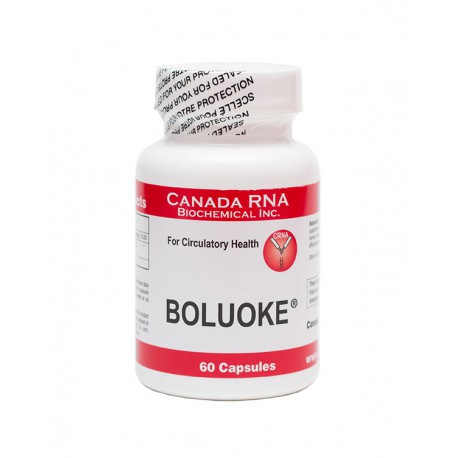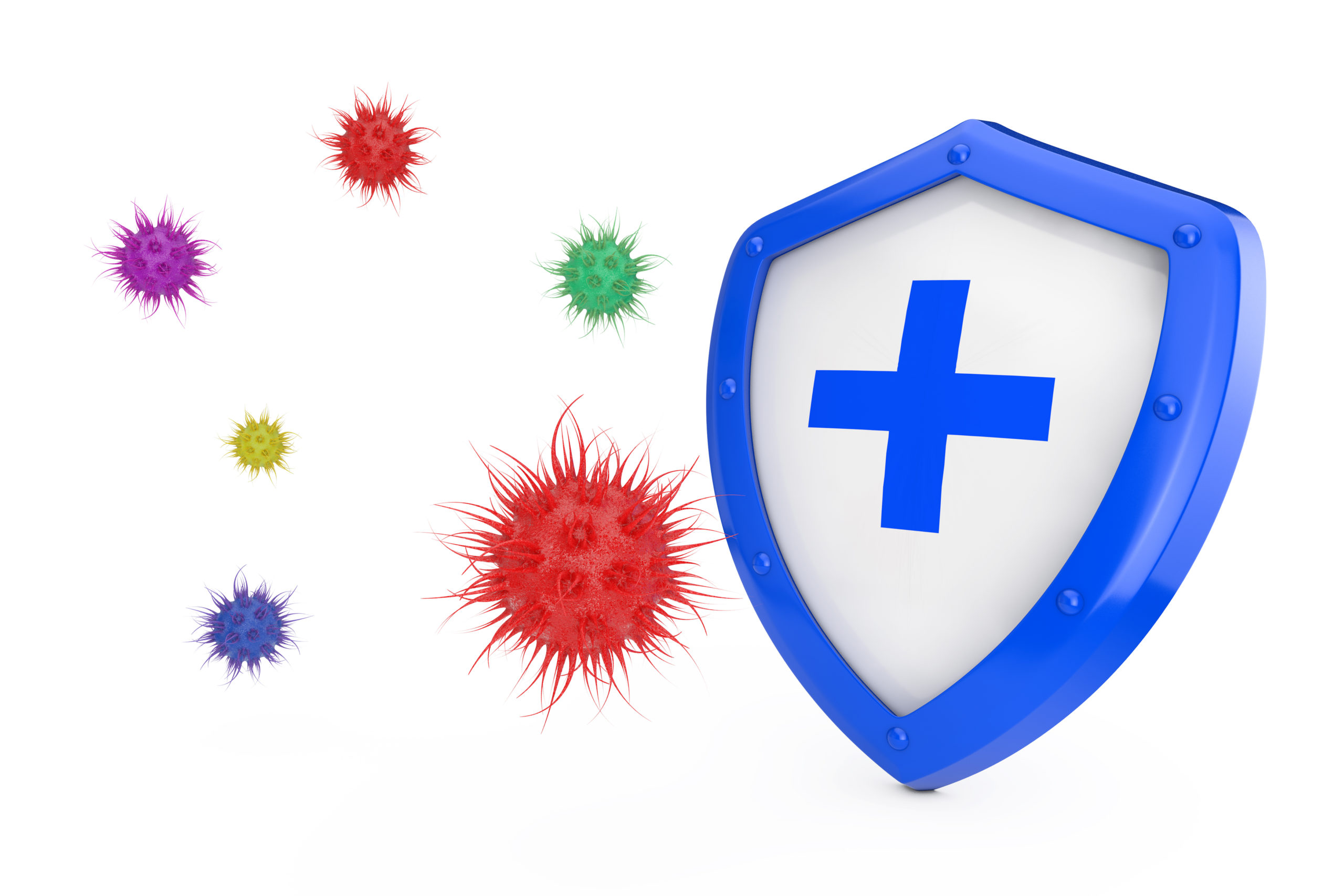
Lumbrokinase – A circulatory hero with a humble origin
November 26th, 2016Lumbrokinase – A circulatory hero with a humble origin
By Martin Kwok, BSc, MSAOM, ND
Dr. Martin Kwok holds a naturopathic physician license and a doctor of Traditional Chinese Medicine license in the province of British Columbia in Canada. He has had a general practice in the heart of Richmond for over 17 years. Dr. Kwok also holds positions as the vice-president of Canada RNA Biochemical Inc., the secretary of National Traditional Chinese Medicine Association of Canada and the editor-in-chief of Dragon’s Medical Bulletin.
Heart attack and stroke are the two most devastating and common circulatory issues we face in our time. In majority of cases the cause is a severely reduced or completely blocked blood flow due to thromboembolism. Currently there are three main categories of pharmaceutical agents used to treat or prevent ischemia issues: thrombolytics, anti-platelets, and anticoagulants. Thrombolytics can be a life-saver in acute situations when used appropriately, but have a few drawbacks: short window of opportunity for its application, the risk of intra-cranial bleeding, and the fact that they have to be administered via injection. Anti-platelets and anticoagulants may be used acutely or as a secondary prevention. They work by limiting the spread or worsening of the ischemia but do nothing about the existing thrombus or embolus; it is up to the body’s own fibrinolytic system to resolve the clots. Like thrombolytics, anti-platelets and anticoagulants also carry the risks of causing unforeseen bleeding in spite of due care or testing. Is there not a safer and also effective option for treating or preventing ischemia besides the above categories of pharmaceuticals? The answer is “yes” and the agent that would fulfill those criteria is called lumbrokinase!
What is lumbrokinase?
Lumbrokinase is a complex enzyme preparation extracted from earthworms. Lumbrokinase can also be referred to as earthworm powder enzymes (EPE) or earthworm fibrinolytic enzymes (e-PPA). Earthworms have been used in traditional Easter medicine for thousands of years in countries such as China, Japan and Korea. According to the ancient Chinese medical publication Ben Cao Gang Mu (Compendium of Chinese Botanical and Animal Products), earthworms or “Earth Dragons” possess the properties to “invigorate blood, resolve stasis, and unblock the body’s meridians and channels.” As a result, earthworms are commonly used in traditional herbal formulae that treat ischemic or thromboembolic conditions.
Inspired by the empirical wisdom of traditional Eastern medicine, the Japanese started searching for ingredients that could account for the observed properties of earthworms. Finally, in 1983 Dr. Hisashi Mihara succeeded in extracting powerful fibrin-dissolving enzymes from earthworms and he named this group of enzymes lumbrokinase. Since then Korean and Chinese researchers have compiled extensive in-vitro, animal and clinical data on the properties and applications of lumbrokinase over the past 30 years.
As of today, a simple PubMed keyword search of “lumbrokinase” would generate 46 results, with papers dating as far back as 1991 and as recent as April 2014. However, performing the same keyword search (in Chinese) in the largest Chinese digital periodicals database (www.cnki.net) would generate over 1400 publications! This paper is in no way an attempt to summarize all of the available clinical research on lumbrokinase, but merely to point out some of the clinically relevant highlights. Still, what is presented here is barely scratching the surface of its potential clinical applications.
Mechanisms of lumbrokinase
Lumbrokinase is a multiple enzyme preparation; naturally it also affects the coagulation system in multiple ways. Since the discovery of lumbrokinase by Dr. Mihara in 1983, various researchers have isolated the enzyme by different methods and also studied its physiological properties in animal models. All of the results pointed towards the fact that lumbrokinase possesses both direct and indirect fibrinolytic effects1-2. It can activate the plasminogen system and also can achieve direct fibrinolysis independent of the plasminogen system. In 2004, Zhang el al. discovered that lumbrokinase also inhibit PAI-1 activity and enhances t-PA activity3. In addition to being a strong fibrinolytic agent, lumbrokinase may indirectly achieve anticoagulation by inhibiting platelet functions. Jiang et al. were among the first researchers to report on such a property4.
Potential clinical applications
One of the most intensely researched areas is the use of lumbrokinase in the prevention and treatment of ischemic stroke patients. Lumbrokinase was shown to be safe and effective for treating acute ischemic stroke by lowering blood viscosity, preventing re-perfusion damage, and reducing neural deficits5-7. It was also shown to improve the efficacy of aspirin as a secondary prevention of stroke8,15.
Lumbrokinase is equally impressive in the treatment of coronary arterial diseases, including patients with unstable angina. Besides lowering whole blood viscosity, plasma viscosity, fibrinogen, and ESR, research data indicated that lumbrokinase was able to minimize angina attack frequency, minimize the need for nitroglycerine and improve ST segment elevation on the EKG9-11,16. Other potential applications of lumbrokinase include deep venous thrombosis12, essential hypertension13, vascular dementia14, etc.
Unknown to most clinicians, lumbrokinase is now been investigated as a potential anti-tumor and anti-metastatic agent. There are various in-vitro and clinical evidence pointing towards the involvement of hyper-coagulation in stimulating tumor growth and metastasis. There are also evidence showing the potential use of anti-coagulants in limiting cancer growth and metastasis. Though still early in the research stage, lumbrokinase has been shown to inhibit stomach cancer cell growth and liver cancer cell metastasis in vitro20-22. Animal models and human studies are surely to follow in the near future.
Clinical safety of lumbrokinase
The biggest advantage lumbrokinase has over current thrombolytics, anti-platelets and anticoagulants is its safety record, especially with regards to bleeding risks. Virtually all of the researchers who have ever studied or published on lumbrokinase concluded that it is a well-tolerated and very safe fibrinolytic agent. The review paper by Wang et al. estimated the overall adverse reaction rate to be about 3% with symptoms like mild headache, dizziness, constipation, and nausea; all the symptoms resolved spontaneously after stoppage of medicine and required no special treatment17. Another review paper by Tang et al. reached an even lower rate of adverse reactions – 0.7%; though the authors believed this number to be an under-estimation18. The types of adverse reaction include nausea, vomiting, rash, skin itch, and dizziness; there were no bleeding issues, nor damages to liver or kidney.
Researchers and clinicians have long been baffled and amazed by the efficacy and safety of lumbrokinase as a fibrinolytic agent. Now it appears that lumbrokinase, as a multi-enzyme preparation, not only has fibrinolytic effect but also prothrombin activating effects. It is a coagulation modulator helping to maintain the balance of the coagulation system19. This research by Zhao et al. supports the notion that lumbrokinase is a bi-directional agent, and is therefore much safer than any of the currently known agents that affects the coagulation system.
Advantages of lumbrokinase (Boluoke®)
Not all lumbrokinase products are made the same. Lumbrokinase is a mixture of enzymes from earthworms, thus different lumbrokinase manufactured by different companies will have slightly different properties due to the differences in the extraction and purification processes. There are also products that use ground-up earthworms or crudely extracted proteins, yet claim to contain pure lumbrokinase.
Boluoke® (lumbrokinase) is the proprietary lumbrokinase product that went through Phase I to Phase III clinical studies in China, the one first approved by the Chinese SFDA, and also the one with the longest history of safe clinical usage. For most clinicians Boluoke® stands for consistency in safety, quality, and efficacy. Below is a simple comparison table between Boluoke® and other lumbrokinase products:
| Parameter | Boluoke® | Other Lumbrokinase |
| Phase I to Phase III trials done | YES | NO |
| Pharmacodynamics studies done | YES | NO |
| Pharmacokinetics studies done | YES | NO |
| Toxicity & teratogenicity studies done | YES | NO |
| Affects INR or aPTT | INSIGNIFICANTLY | SIGNIFICANTLY |
| Also standardized against tPA activity | YES | NO |
| Over 20 years of safe clinical usage | YES | NO |
| Contains corn ingredient | NO | YES |
| Professional Clinical Support | YES | MAYBE |
Current challenges of lumbrokinase
Even though Lumbrokinase is a well-researched and clinically proven enzyme preparation, outside of Asian counties it is relatively unknown to most conventional practitioners. This is likely due to three main reasons: first, most of the available clinical data on lumbrokinase is in Chinese and not readily accessible to most clinicians or researchers; second, pharmaceutical grade lumbrokinase is expensive and hard to come by (primarily from China), thus only a few companies are selling and promoting its clinical use; third, major pharmaceutical companies have not found a way to profit from this enzyme, since natural proteins are not patentable. However, works have begun in further selecting and isolating lumbrokinase to one single enzyme, paving way for the eventual patenting of that particular enzyme via recombinant DNA technology.
The use of earthworms to achieve circulatory health in traditional medicine has come a long way. First there was dried earthworms used in traditional oriental herbal decoctions, and then there were ground-up earthworm powders. Later came the granular crude extract of earthworms and now there is lumbrokinase, a purified multiple-enzyme preparation extracted from earthworms. Just like omega-3 molecules from fish oil, polyphenols from green tea and curcumin from turmeric root, in time lumbrokinase shall be known as the most valuable ingredients from the humble earthworms.
References
- Ma EL, et al. Effects of Rongshuan No 1 (F-1) on the antithrombotic and antiplatelet aggregation. Journal of Shenyang Pharmaceutical University 2001;18(5):370-372.
- He ZZ, et al. Separation and purification of earthworm fibrinolytic enzyme and the study of anti-thrombosis activity. Chinese Journal of Biochemical Pharmaceutics 2001;22(6):284-286.
- Zhang J, et al. Experimental study on the effect of lumbrokinase on fibrinolysis in rats. Chinese Journal of Pathophysiology 2004;20(5):891-892.
- Jiang DS, et al. Inhibition of platelet aggregation in hamsters by lumbrokinase extracted from Eisenia fetida. Journal of Capital Medical University 1994;15(4):291-294.
- Yang M, et al. Eisenia fetida lumbrokinase research VI – thrombolytic effect in rabbits and protective effects in experimental stroke model in hamsters. Biotechnology 1995;5(3):9-11.
- Li WY, et al. Observation of treating twenty-seven cases of ischemic stroke patients with lumbrokinase. New Chinese Medicine 2003;34(4):63-64.
- Zhang HY. Observation of treating acute ischemic stroke with lumbrokinase. Capital Medicine 2000;7(3):45-46.
- Zhang DJ, et al. Prevention of ischemic stroke recurrence using lumbrokinase. Capital Medicine 2003;5(10):47-48.
- Liu HS. Clinical observation of treating 60 angina patients with lumbrokinase. Tianjin Pharmacy 2002;14(2):45-46.
- Yi XF, et al. Efficacy of treating unstable angina seniors with lumbrokinase. Capital Medicine 2002;9(9):57-58.
- Zhou HS, et al. Clinical observation of treating unstable angina seniors with lumbrokinase capsules. Central Plains Medical Journal 2001;28(9):2-3.
- Song JS, et al. Clinical analysis of treating 17 cases of deep venous thrombosis with lumbrokinase. Occupation and Health 2001;17(4):111-115.
- Ye SZ, et al. Observation of treating 51 cases of essential hypertension with lumbrokinase. Clinical Medicine 2007;27(9):59.
- Gao Y, et al. Efficacy of combining lumbrokinase with nimodipine in the treatment of vascular dementia. Journal of Liaoning University of Traditional Chinese Medicine 2008;10(11):5-7.
- Cao YJ, et al. Oral fibrinogen-depleting agent lumbrokinase for secondary ischemic stroke prevention: results from a multicenter, randomized, parallel-group and controlled clinical trial. Chin Med J (Engl). 2013 Nov;126(21):4060-5.
- Kasim M, et al. Improved myocardial perfusion in stable angina pectoris by oral lumbrokinase: a pilot study. J Altern Complement Med. 2009 May;15(5):539-44.
- Wang CL, et al. Progress in lumbrokinase. Progress in Veterinary Medicine 2009;30(11):86-90.
- Tang YJ, et al. Lumbrokinase: A review of domestic research literatures. Capital Medicine 2011;18(6):39-42.
- Zhao J, et al. Eisenia fetida Protease-III-1 Functions in Both Fibrinolysis and Fibrogenesis. J Biomed Biotechnol. 2007;2007(5):97654.
- Li HY, et al. Antitumor activity of earthworm fibrinolytic enzyme. Chinese Pharmacological Bulletin 2004;20(8):908-910.
- Chen H, et al. Effect of earthworm fibrinolytic enzyme on the inhibition of invasion and metastasis in hepatocellular carcinoma cell. Jiangsu Medical Journal 2008;34(4):383-385.
- Chang CX, et al. Anti-metastatic activity of earthworm fibrinolytic enzyme on hepatoma cell in vivo. Traditional Chinese Drug Research & Clinical Pharmacology 2009;20(6):520-524.








